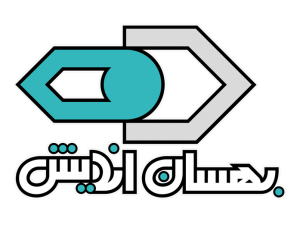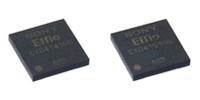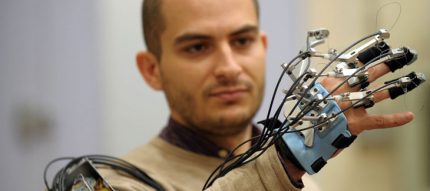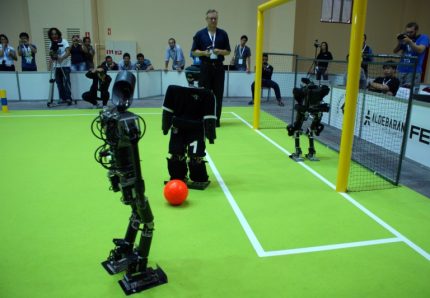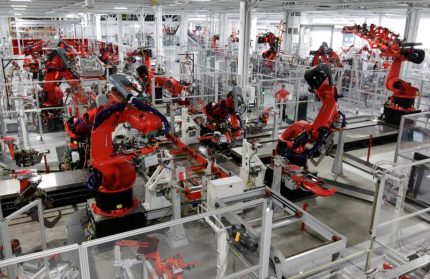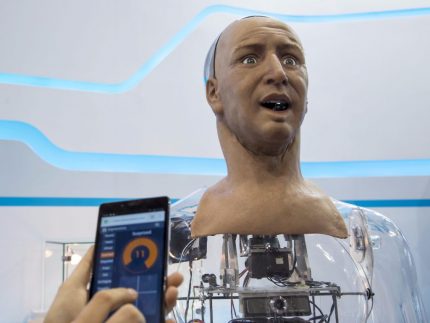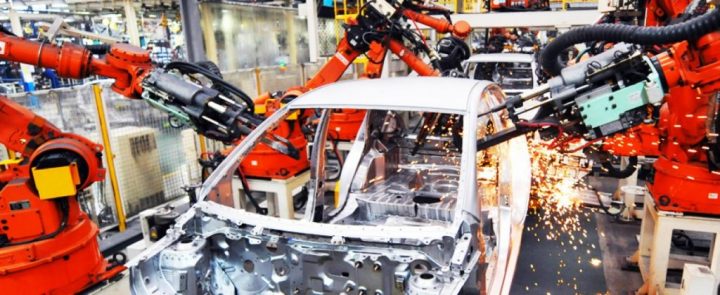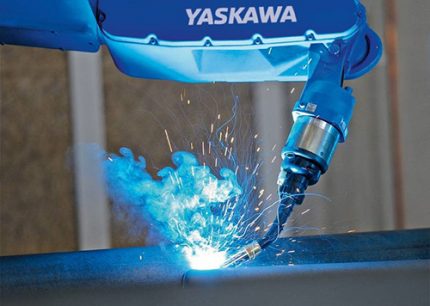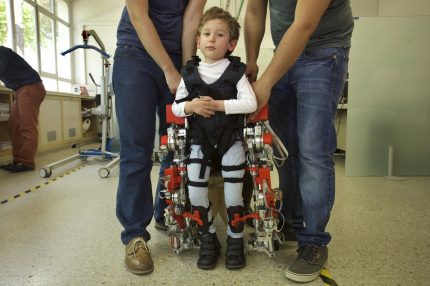الگوریتم Canny در ++C
لبه یاب کنی توسط جان اف کنی در سال 1986 ایجاد شد و هنوز یک لبه یاب استاندارد و با دقت و کیفیت بالا میباشد.الگوریتم لبه یابی کنی یکی از بهترین لبه یابها تا به امروز است. در ادامه روش کار این الگوریتم و هم چنین کد الگوریتم Canny در ++C را بررسی خواهیم کرد. این الگوریتم لبه یابی از سه بخش اصلی زیر تشکیل شده است:
- تضعیف نویز
- پیدا کردن نقاطی که بتوان آنها را به عنوان لبه در نظر گرفت
- حذب نقاطی که احتمال لبه بودن آنها کم است
معیارهایی که در لبه یاب کنی مطرح است:
1 -پایین آوردن نرخ خطا- یعنی تا حد امکان هیچ لبه ای در تصویر نباید گم شود و هم چنین هیچ چیزی که لبه نیست نباید به جای لبه فرض شود. لبه هان پیدا شده تا حد ممکن به لبه ها اصلی
نزدیک باشند.
2 -لبه در مکان واقعی خود باشد- یعنی تا حد ممکن لبه ها کمترین فاصله را با مکان واقعی خود داشته باشند.
3 -بران هر لبه فقط یک پاسخ داشته باشیم.
4 -لبه ها کمترین ضخامت را داشته باشند- (در صورت امکان یک پیکسل).
لبه یاب کنی بخاطر توانایی در تولید لبه های نازک تا حد یک ییکسل برای لبه های پیوسته معروف شده است. این لبه یاب شامل چهار مرحله و چهار ورودی زیر است:
یک تصویر ورودی
یک پارامتر به نام سیگما جهت مقدار نرم کنندگی تصویر
یک حد آستانه بالا (Th)
یک حد آستانه پایین (Tl)
مراحل الگوریتم Canny:
1- در ابتدا باید تصویر رنگی را به جهت لبه یابی بهتر به یک تصویر سطح خاکسترن تبدیب کرد.
2- نویز را از تصویر دریافتی حذف کرد. بدلیل اینکه فیلتر گاوسین از یک ماسک ساده برای حذف نویز استفاده می کند لبه یاب کنی در مرحله اول برای حذف نویز آن را بکار میگیرد.
3- در یک تصویر سطح خاکستر جایی را که بیشترین تغییرات را داشته باشند به عنوان لبه در نظر گرفته می شوند و این مکانها با گرفتن گرادیان تصویر با استفاده عملگر سوبل بدست می آیند. سپس لبه های مات یافت شده به لبه های تیزتر تبدیل می شوند.
4- برخی از لبه های کشف شده واقعا لبه نیستند و در واقع نویز هستند که باید آنها توسط حد آستانه هیسترزیس فیلتر شوند.هیسترزیس از دو حد آستانه بالاتر (Th) و حد آستانه پایین تر (Tl) استفاده کرده و کنی پیشنهاد می کند که نسبت استانه بالا به پایین سه به یک باشد.
این روش بیشتر به کشف لبه های ضعیف به درستی می پردازد و کمتر فریب نویز را می خورد و از بقیه روش ها بهتر است.


کد الگوریتم Canny در ++C:
برای الگوریتم Canny دو کد زیر ارائه می شود که کد شماره 2 کد کاملتری است.
کد شماره الگوریتم 1 الگوریتم Canny در ++C:
در زیر استفاده از الگوریتم کنی در ++C است. توجه داشته باشید که تصویر ابتدا به تصویر سیاه و سفید تبدیل می شود، سپس فیلتر گاوسی برای کاهش نویز در تصویر استفاده می شود. سپس الگوریتم Canny برای تشخیص لبه استفاده می شود.
// CannyTutorial.cpp : Defines the entry point for the console application.
// Environment: Visual studio 2015, Windows 10
// Assumptions: Opecv is installed configured in the visual studio project
// Opencv version: OpenCV 3.1
#include "stdafx.h"
#include<opencv2/highgui/highgui.hpp>
#include<opencv2/imgproc/imgproc.hpp>
#include<string>
#include<iostream>
int main()
{
//Modified from source: https://github.com/MicrocontrollersAndMore/OpenCV_3_Windows_10_Installation_Tutorial
cv::Mat imgOriginal; // input image
cv::Mat imgGrayscale; // grayscale of input image
cv::Mat imgBlurred; // intermediate blured image
cv::Mat imgCanny; // Canny edge image
std::cout << "Please enter an image filename : "; std::string img_addr; std::cin >> img_addr;
std::cout << "Searching for " + img_addr << std::endl;
imgOriginal = cv::imread(img_addr); // open image
if (imgOriginal.empty()) { // if unable to open image
std::cout << "error: image not read from file\n\n"; // show error message on command line
return(0); // and exit program
}
cv::cvtColor(imgOriginal, imgGrayscale, CV_BGR2GRAY); // convert to grayscale
cv::GaussianBlur(imgGrayscale, // input image
imgBlurred, // output image
cv::Size(5, 5), // smoothing window width and height in pixels
1.5); // sigma value, determines how much the image will be blurred
cv::Canny(imgBlurred, // input image
imgCanny, // output image
100, // low threshold
200); // high threshold
// Declare windows
// Note: you can use CV_WINDOW_NORMAL which allows resizing the window
// or CV_WINDOW_AUTOSIZE for a fixed size window matching the resolution of the image
// CV_WINDOW_AUTOSIZE is the default
cv::namedWindow("imgOriginal", CV_WINDOW_AUTOSIZE);
cv::namedWindow("imgCanny", CV_WINDOW_AUTOSIZE);
//Show windows
cv::imshow("imgOriginal", imgOriginal);
cv::imshow("imgCanny", imgCanny);
cv::waitKey(0); // hold windows open until user presses a key
return 0;
}
دانلود کد فوق از طریق لینک زیر:
رمز فایل : behsanandish.com
کد شماره 2:
مرحله 1: یک blur(تار کننده) گاوسی را اعمال کنید.
اول متغیرهای ضروری اعلام شده اند و بعضی از آنها اولیه هستند. سپس Blur گاوسی اعمال می شود. برای انجام این کار یک ماسک 5×5 بر روی تصویر منتقل می شود. هر پیکسل به صورت مجموع مقادیر پیکسل در محدوده 5×5 آن ضربدر وزن گاوسی متناظر تقسیم شده توسط وزن مجموع کل ماسک تعریف می شود.

ماسک گاوسی
#include "stdafx.h"
#include "tripod.h"
#include "tripodDlg.h"
#include "LVServerDefs.h"
#include "math.h"
#include <fstream>
#include <string>
#include <iostream>
#include <stdlib.h>
#include <stdio.h>
#ifdef _DEBUG
#define new DEBUG_NEW
#undef THIS_FILE
static char THIS_FILE[] = __FILE__;
#endif
using namespace std;
/////////////////////////////////////////////////////////////////////////////
// CAboutDlg dialog used for App About
class CAboutDlg : public CDialog
{
public:
CAboutDlg();
// Dialog Data
//{{AFX_DATA(CAboutDlg)
enum { IDD = IDD_ABOUTBOX };
//}}AFX_DATA
// ClassWizard generated virtual function overrides
//{{AFX_VIRTUAL(CAboutDlg)
protected:
virtual void DoDataExchange(CDataExchange* pDX); // DDX/DDV support
//}}AFX_VIRTUAL
// Implementation
protected:
//{{AFX_MSG(CAboutDlg)
//}}AFX_MSG
DECLARE_MESSAGE_MAP()
};
CAboutDlg::CAboutDlg() : CDialog(CAboutDlg::IDD)
{
//{{AFX_DATA_INIT(CAboutDlg)
//}}AFX_DATA_INIT
}
void CAboutDlg::DoDataExchange(CDataExchange* pDX)
{
CDialog::DoDataExchange(pDX);
//{{AFX_DATA_MAP(CAboutDlg)
//}}AFX_DATA_MAP
}
BEGIN_MESSAGE_MAP(CAboutDlg, CDialog)
//{{AFX_MSG_MAP(CAboutDlg)
// No message handlers
//}}AFX_MSG_MAP
END_MESSAGE_MAP()
/////////////////////////////////////////////////////////////////////////////
// CTripodDlg dialog
CTripodDlg::CTripodDlg(CWnd* pParent /*=NULL*/)
: CDialog(CTripodDlg::IDD, pParent)
{
//{{AFX_DATA_INIT(CTripodDlg)
// NOTE: the ClassWizard will add member initialization here
//}}AFX_DATA_INIT
// Note that LoadIcon does not require a subsequent DestroyIcon in Win32
m_hIcon = AfxGetApp()->LoadIcon(IDR_MAINFRAME);
//////////////// Set destination BMP to NULL first
m_destinationBitmapInfoHeader = NULL;
}
////////////////////// Additional generic functions
static unsigned PixelBytes(int w, int bpp)
{
return (w * bpp + 7) / 8;
}
static unsigned DibRowSize(int w, int bpp)
{
return (w * bpp + 31) / 32 * 4;
}
static unsigned DibRowSize(LPBITMAPINFOHEADER pbi)
{
return DibRowSize(pbi->biWidth, pbi->biBitCount);
}
static unsigned DibRowPadding(int w, int bpp)
{
return DibRowSize(w, bpp) - PixelBytes(w, bpp);
}
static unsigned DibRowPadding(LPBITMAPINFOHEADER pbi)
{
return DibRowPadding(pbi->biWidth, pbi->biBitCount);
}
static unsigned DibImageSize(int w, int h, int bpp)
{
return h * DibRowSize(w, bpp);
}
static size_t DibSize(int w, int h, int bpp)
{
return sizeof (BITMAPINFOHEADER) + DibImageSize(w, h, bpp);
}
/////////////////////// end of generic functions
void CTripodDlg::DoDataExchange(CDataExchange* pDX)
{
CDialog::DoDataExchange(pDX);
//{{AFX_DATA_MAP(CTripodDlg)
DDX_Control(pDX, IDC_PROCESSEDVIEW, m_cVideoProcessedView);
DDX_Control(pDX, IDC_UNPROCESSEDVIEW, m_cVideoUnprocessedView);
//}}AFX_DATA_MAP
}
BEGIN_MESSAGE_MAP(CTripodDlg, CDialog)
//{{AFX_MSG_MAP(CTripodDlg)
ON_WM_SYSCOMMAND()
ON_WM_PAINT()
ON_WM_QUERYDRAGICON()
ON_BN_CLICKED(IDEXIT, OnExit)
//}}AFX_MSG_MAP
END_MESSAGE_MAP()
/////////////////////////////////////////////////////////////////////////////
// CTripodDlg message handlers
BOOL CTripodDlg::OnInitDialog()
{
CDialog::OnInitDialog();
// Add "About..." menu item to system menu.
// IDM_ABOUTBOX must be in the system command range.
ASSERT((IDM_ABOUTBOX & 0xFFF0) == IDM_ABOUTBOX);
ASSERT(IDM_ABOUTBOX < 0xF000); CMenu* pSysMenu = GetSystemMenu(FALSE); if (pSysMenu != NULL) { CString strAboutMenu; strAboutMenu.LoadString(IDS_ABOUTBOX); if (!strAboutMenu.IsEmpty()) { pSysMenu->AppendMenu(MF_SEPARATOR);
pSysMenu->AppendMenu(MF_STRING, IDM_ABOUTBOX, strAboutMenu);
}
}
// Set the icon for this dialog. The framework does this automatically
// when the application's main window is not a dialog
SetIcon(m_hIcon, TRUE); // Set big icon
SetIcon(m_hIcon, FALSE); // Set small icon
// TODO: Add extra initialization here
// For Unprocessed view videoportal (top one)
char sRegUnprocessedView[] = "HKEY_LOCAL_MACHINE\\Software\\UnprocessedView";
m_cVideoUnprocessedView.PrepareControl("UnprocessedView", sRegUnprocessedView, 0 );
m_cVideoUnprocessedView.EnableUIElements(UIELEMENT_STATUSBAR,0,TRUE);
m_cVideoUnprocessedView.ConnectCamera2();
m_cVideoUnprocessedView.SetEnablePreview(TRUE);
// For binary view videoportal (bottom one)
char sRegProcessedView[] = "HKEY_LOCAL_MACHINE\\Software\\ProcessedView";
m_cVideoProcessedView.PrepareControl("ProcessedView", sRegProcessedView, 0 );
m_cVideoProcessedView.EnableUIElements(UIELEMENT_STATUSBAR,0,TRUE);
m_cVideoProcessedView.ConnectCamera2();
m_cVideoProcessedView.SetEnablePreview(TRUE);
// Initialize the size of binary videoportal
m_cVideoProcessedView.SetPreviewMaxHeight(240);
m_cVideoProcessedView.SetPreviewMaxWidth(320);
// Uncomment if you wish to fix the live videoportal's size
// m_cVideoUnprocessedView.SetPreviewMaxHeight(240);
// m_cVideoUnprocessedView.SetPreviewMaxWidth(320);
// Find the screen coodinates of the binary videoportal
m_cVideoProcessedView.GetWindowRect(m_rectForProcessedView);
ScreenToClient(m_rectForProcessedView);
allocateDib(CSize(320, 240));
// Start grabbing frame data for Procssed videoportal (bottom one)
m_cVideoProcessedView.StartVideoHook(0);
return TRUE; // return TRUE unless you set the focus to a control
}
void CTripodDlg::OnSysCommand(UINT nID, LPARAM lParam)
{
if ((nID & 0xFFF0) == IDM_ABOUTBOX)
{
CAboutDlg dlgAbout;
dlgAbout.DoModal();
}
else
{
CDialog::OnSysCommand(nID, lParam);
}
}
// If you add a minimize button to your dialog, you will need the code below
// to draw the icon. For MFC applications using the document/view model,
// this is automatically done for you by the framework.
void CTripodDlg::OnPaint()
{
if (IsIconic())
{
CPaintDC dc(this); // device context for painting
SendMessage(WM_ICONERASEBKGND, (WPARAM) dc.GetSafeHdc(), 0);
// Center icon in client rectangle
int cxIcon = GetSystemMetrics(SM_CXICON);
int cyIcon = GetSystemMetrics(SM_CYICON);
CRect rect;
GetClientRect(&rect);
int x = (rect.Width() - cxIcon + 1) / 2;
int y = (rect.Height() - cyIcon + 1) / 2;
// Draw the icon
dc.DrawIcon(x, y, m_hIcon);
}
else
{
CDialog::OnPaint();
}
}
// The system calls this to obtain the cursor to display while the user drags
// the minimized window.
HCURSOR CTripodDlg::OnQueryDragIcon()
{
return (HCURSOR) m_hIcon;
}
void CTripodDlg::OnExit()
{
// TODO: Add your control notification handler code here
// Kill live view videoportal (top one)
m_cVideoUnprocessedView.StopVideoHook(0);
m_cVideoUnprocessedView.DisconnectCamera();
// Kill binary view videoportal (bottom one)
m_cVideoProcessedView.StopVideoHook(0);
m_cVideoProcessedView.DisconnectCamera();
// Kill program
DestroyWindow();
}
BEGIN_EVENTSINK_MAP(CTripodDlg, CDialog)
//{{AFX_EVENTSINK_MAP(CTripodDlg)
ON_EVENT(CTripodDlg, IDC_PROCESSEDVIEW, 1 /* PortalNotification */, OnPortalNotificationProcessedview, VTS_I4 VTS_I4 VTS_I4 VTS_I4)
//}}AFX_EVENTSINK_MAP
END_EVENTSINK_MAP()
void CTripodDlg::OnPortalNotificationProcessedview(long lMsg, long lParam1, long lParam2, long lParam3)
{
// TODO: Add your control notification handler code here
// This function is called at the camera's frame rate
#define NOTIFICATIONMSG_VIDEOHOOK 10
// Declare some useful variables
// QCSDKMFC.pdf (Quickcam MFC documentation) p. 103 explains the variables lParam1, lParam2, lParam3 too
LPBITMAPINFOHEADER lpBitmapInfoHeader; // Frame's info header contains info like width and height
LPBYTE lpBitmapPixelData; // This pointer-to-long will point to the start of the frame's pixel data
unsigned long lTimeStamp; // Time when frame was grabbed
switch(lMsg) {
case NOTIFICATIONMSG_VIDEOHOOK:
{
lpBitmapInfoHeader = (LPBITMAPINFOHEADER) lParam1;
lpBitmapPixelData = (LPBYTE) lParam2;
lTimeStamp = (unsigned long) lParam3;
grayScaleTheFrameData(lpBitmapInfoHeader, lpBitmapPixelData);
doMyImageProcessing(lpBitmapInfoHeader); // Place where you'd add your image processing code
displayMyResults(lpBitmapInfoHeader);
}
break;
default:
break;
}
}
void CTripodDlg::allocateDib(CSize sz)
{
// Purpose: allocate information for a device independent bitmap (DIB)
// Called from OnInitVideo
if(m_destinationBitmapInfoHeader) {
free(m_destinationBitmapInfoHeader);
m_destinationBitmapInfoHeader = NULL;
}
if(sz.cx | sz.cy) {
m_destinationBitmapInfoHeader = (LPBITMAPINFOHEADER)malloc(DibSize(sz.cx, sz.cy, 24));
ASSERT(m_destinationBitmapInfoHeader);
m_destinationBitmapInfoHeader->biSize = sizeof(BITMAPINFOHEADER);
m_destinationBitmapInfoHeader->biWidth = sz.cx;
m_destinationBitmapInfoHeader->biHeight = sz.cy;
m_destinationBitmapInfoHeader->biPlanes = 1;
m_destinationBitmapInfoHeader->biBitCount = 24;
m_destinationBitmapInfoHeader->biCompression = 0;
m_destinationBitmapInfoHeader->biSizeImage = DibImageSize(sz.cx, sz.cy, 24);
m_destinationBitmapInfoHeader->biXPelsPerMeter = 0;
m_destinationBitmapInfoHeader->biYPelsPerMeter = 0;
m_destinationBitmapInfoHeader->biClrImportant = 0;
m_destinationBitmapInfoHeader->biClrUsed = 0;
}
}
void CTripodDlg::displayMyResults(LPBITMAPINFOHEADER lpThisBitmapInfoHeader)
{
// displayMyResults: Displays results of doMyImageProcessing() in the videoport
// Notes: StretchDIBits stretches a device-independent bitmap to the appropriate size
CDC *pDC; // Device context to display bitmap data
pDC = GetDC();
int nOldMode = SetStretchBltMode(pDC->GetSafeHdc(),COLORONCOLOR);
StretchDIBits(
pDC->GetSafeHdc(),
m_rectForProcessedView.left, // videoportal left-most coordinate
m_rectForProcessedView.top, // videoportal top-most coordinate
m_rectForProcessedView.Width(), // videoportal width
m_rectForProcessedView.Height(), // videoportal height
0, // Row position to display bitmap in videoportal
0, // Col position to display bitmap in videoportal
lpThisBitmapInfoHeader->biWidth, // m_destinationBmp's number of columns
lpThisBitmapInfoHeader->biHeight, // m_destinationBmp's number of rows
m_destinationBmp, // The bitmap to display; use the one resulting from doMyImageProcessing
(BITMAPINFO*)m_destinationBitmapInfoHeader, // The bitmap's header info e.g. width, height, number of bits etc
DIB_RGB_COLORS, // Use default 24-bit color table
SRCCOPY // Just display
);
SetStretchBltMode(pDC->GetSafeHdc(),nOldMode);
ReleaseDC(pDC);
// Note: 04/24/02 - Added the following:
// Christopher Wagner cwagner@fas.harvard.edu noticed that memory wasn't being freed
// Recall OnPortalNotificationProcessedview, which gets called everytime
// a frame of data arrives, performs 3 steps:
// (1) grayScaleTheFrameData - which mallocs m_destinationBmp
// (2) doMyImageProcesing
// (3) displayMyResults - which we're in now
// Since we're finished with the memory we malloc'ed for m_destinationBmp
// we should free it:
free(m_destinationBmp);
// End of adds
}
void CTripodDlg::grayScaleTheFrameData(LPBITMAPINFOHEADER lpThisBitmapInfoHeader, LPBYTE lpThisBitmapPixelData)
{
// grayScaleTheFrameData: Called by CTripodDlg::OnPortalNotificationBinaryview
// Task: Read current frame pixel data and computes a grayscale version
unsigned int W, H; // Width and Height of current frame [pixels]
BYTE *sourceBmp; // Pointer to current frame of data
unsigned int row, col;
unsigned long i;
BYTE grayValue;
BYTE redValue;
BYTE greenValue;
BYTE blueValue;
W = lpThisBitmapInfoHeader->biWidth; // biWidth: number of columns
H = lpThisBitmapInfoHeader->biHeight; // biHeight: number of rows
// Store pixel data in row-column vector format
// Recall that each pixel requires 3 bytes (red, blue and green bytes)
// m_destinationBmp is a protected member and declared in binarizeDlg.h
m_destinationBmp = (BYTE*)malloc(H*3*W*sizeof(BYTE));
// Point to the current frame's pixel data
sourceBmp = lpThisBitmapPixelData;
for (row = 0; row < H; row++) {
for (col = 0; col < W; col++) { // Recall each pixel is composed of 3 bytes i = (unsigned long)(row*3*W + 3*col); // The source pixel has a blue, green andred value: blueValue = *(sourceBmp + i); greenValue = *(sourceBmp + i + 1); redValue = *(sourceBmp + i + 2); // A standard equation for computing a grayscale value based on RGB values grayValue = (BYTE)(0.299*redValue + 0.587*greenValue + 0.114*blueValue); // The destination BMP will be a grayscale version of the source BMP *(m_destinationBmp + i) = grayValue; *(m_destinationBmp + i + 1) = grayValue; *(m_destinationBmp + i + 2) = grayValue; } } } void CTripodDlg::doMyImageProcessing(LPBITMAPINFOHEADER lpThisBitmapInfoHeader) { // doMyImageProcessing: This is where you'd write your own image processing code // Task: Read a pixel's grayscale value and process accordingly unsigned int W, H; // Width and Height of current frame [pixels] unsigned int row, col; // Pixel's row and col positions unsigned long i; // Dummy variable for row-column vector int upperThreshold = 60; // Gradient strength nessicary to start edge int lowerThreshold = 30; // Minimum gradient strength to continue edge unsigned long iOffset; // Variable to offset row-column vector during sobel mask int rowOffset; // Row offset from the current pixel int colOffset; // Col offset from the current pixel int rowTotal = 0; // Row position of offset pixel int colTotal = 0; // Col position of offset pixel int Gx; // Sum of Sobel mask products values in the x direction int Gy; // Sum of Sobel mask products values in the y direction float thisAngle; // Gradient direction based on Gx and Gy int newAngle; // Approximation of the gradient direction bool edgeEnd; // Stores whether or not the edge is at the edge of the possible image int GxMask[3][3]; // Sobel mask in the x direction int GyMask[3][3]; // Sobel mask in the y direction int newPixel; // Sum pixel values for gaussian int gaussianMask[5][5]; // Gaussian mask W = lpThisBitmapInfoHeader->biWidth; // biWidth: number of columns
H = lpThisBitmapInfoHeader->biHeight; // biHeight: number of rows
for (row = 0; row < H; row++) {
for (col = 0; col < W; col++) {
edgeDir[row][col] = 0;
}
}
/* Declare Sobel masks */
GxMask[0][0] = -1; GxMask[0][1] = 0; GxMask[0][2] = 1;
GxMask[1][0] = -2; GxMask[1][1] = 0; GxMask[1][2] = 2;
GxMask[2][0] = -1; GxMask[2][1] = 0; GxMask[2][2] = 1;
GyMask[0][0] = 1; GyMask[0][1] = 2; GyMask[0][2] = 1;
GyMask[1][0] = 0; GyMask[1][1] = 0; GyMask[1][2] = 0;
GyMask[2][0] = -1; GyMask[2][1] = -2; GyMask[2][2] = -1;
/* Declare Gaussian mask */
gaussianMask[0][0] = 2; gaussianMask[0][1] = 4; gaussianMask[0][2] = 5; gaussianMask[0][3] = 4; gaussianMask[0][4] = 2;
gaussianMask[1][0] = 4; gaussianMask[1][1] = 9; gaussianMask[1][2] = 12; gaussianMask[1][3] = 9; gaussianMask[1][4] = 4;
gaussianMask[2][0] = 5; gaussianMask[2][1] = 12; gaussianMask[2][2] = 15; gaussianMask[2][3] = 12; gaussianMask[2][4] = 2;
gaussianMask[3][0] = 4; gaussianMask[3][1] = 9; gaussianMask[3][2] = 12; gaussianMask[3][3] = 9; gaussianMask[3][4] = 4;
gaussianMask[4][0] = 2; gaussianMask[4][1] = 4; gaussianMask[4][2] = 5; gaussianMask[4][3] = 4; gaussianMask[4][4] = 2;
/* Gaussian Blur */
for (row = 2; row < H-2; row++) {
for (col = 2; col < W-2; col++) {
newPixel = 0;
for (rowOffset=-2; rowOffset<=2; rowOffset++) {
for (colOffset=-2; colOffset<=2; colOffset++) {
rowTotal = row + rowOffset;
colTotal = col + colOffset;
iOffset = (unsigned long)(rowTotal*3*W + colTotal*3);
newPixel += (*(m_destinationBmp + iOffset)) * gaussianMask[2 + rowOffset][2 + colOffset];
}
}
i = (unsigned long)(row*3*W + col*3);
*(m_destinationBmp + i) = newPixel / 159;
}
}
/* Determine edge directions and gradient strengths */
for (row = 1; row < H-1; row++) {
for (col = 1; col < W-1; col++) {
i = (unsigned long)(row*3*W + 3*col);
Gx = 0;
Gy = 0;
/* Calculate the sum of the Sobel mask times the nine surrounding pixels in the x and y direction */
for (rowOffset=-1; rowOffset<=1; rowOffset++) {
for (colOffset=-1; colOffset<=1; colOffset++) {
rowTotal = row + rowOffset;
colTotal = col + colOffset;
iOffset = (unsigned long)(rowTotal*3*W + colTotal*3);
Gx = Gx + (*(m_destinationBmp + iOffset) * GxMask[rowOffset + 1][colOffset + 1]);
Gy = Gy + (*(m_destinationBmp + iOffset) * GyMask[rowOffset + 1][colOffset + 1]);
}
}
gradient[row][col] = sqrt(pow(Gx,2.0) + pow(Gy,2.0)); // Calculate gradient strength
thisAngle = (atan2(Gx,Gy)/3.14159) * 180.0; // Calculate actual direction of edge
/* Convert actual edge direction to approximate value */
if ( ( (thisAngle < 22.5) && (thisAngle > -22.5) ) || (thisAngle > 157.5) || (thisAngle < -157.5) ) newAngle = 0; if ( ( (thisAngle > 22.5) && (thisAngle < 67.5) ) || ( (thisAngle < -112.5) && (thisAngle > -157.5) ) )
newAngle = 45;
if ( ( (thisAngle > 67.5) && (thisAngle < 112.5) ) || ( (thisAngle < -67.5) && (thisAngle > -112.5) ) )
newAngle = 90;
if ( ( (thisAngle > 112.5) && (thisAngle < 157.5) ) || ( (thisAngle < -22.5) && (thisAngle > -67.5) ) )
newAngle = 135;
edgeDir[row][col] = newAngle; // Store the approximate edge direction of each pixel in one array
}
}
/* Trace along all the edges in the image */
for (row = 1; row < H - 1; row++) {
for (col = 1; col < W - 1; col++) { edgeEnd = false; if (gradient[row][col] > upperThreshold) { // Check to see if current pixel has a high enough gradient strength to be part of an edge
/* Switch based on current pixel's edge direction */
switch (edgeDir[row][col]){
case 0:
findEdge(0, 1, row, col, 0, lowerThreshold);
break;
case 45:
findEdge(1, 1, row, col, 45, lowerThreshold);
break;
case 90:
findEdge(1, 0, row, col, 90, lowerThreshold);
break;
case 135:
findEdge(1, -1, row, col, 135, lowerThreshold);
break;
default :
i = (unsigned long)(row*3*W + 3*col);
*(m_destinationBmp + i) =
*(m_destinationBmp + i + 1) =
*(m_destinationBmp + i + 2) = 0;
break;
}
}
else {
i = (unsigned long)(row*3*W + 3*col);
*(m_destinationBmp + i) =
*(m_destinationBmp + i + 1) =
*(m_destinationBmp + i + 2) = 0;
}
}
}
/* Suppress any pixels not changed by the edge tracing */
for (row = 0; row < H; row++) {
for (col = 0; col < W; col++) {
// Recall each pixel is composed of 3 bytes
i = (unsigned long)(row*3*W + 3*col);
// If a pixel's grayValue is not black or white make it black
if( ((*(m_destinationBmp + i) != 255) && (*(m_destinationBmp + i) != 0)) || ((*(m_destinationBmp + i + 1) != 255) && (*(m_destinationBmp + i + 1) != 0)) || ((*(m_destinationBmp + i + 2) != 255) && (*(m_destinationBmp + i + 2) != 0)) )
*(m_destinationBmp + i) =
*(m_destinationBmp + i + 1) =
*(m_destinationBmp + i + 2) = 0; // Make pixel black
}
}
/* Non-maximum Suppression */
for (row = 1; row < H - 1; row++) {
for (col = 1; col < W - 1; col++) {
i = (unsigned long)(row*3*W + 3*col);
if (*(m_destinationBmp + i) == 255) { // Check to see if current pixel is an edge
/* Switch based on current pixel's edge direction */
switch (edgeDir[row][col]) {
case 0:
suppressNonMax( 1, 0, row, col, 0, lowerThreshold);
break;
case 45:
suppressNonMax( 1, -1, row, col, 45, lowerThreshold);
break;
case 90:
suppressNonMax( 0, 1, row, col, 90, lowerThreshold);
break;
case 135:
suppressNonMax( 1, 1, row, col, 135, lowerThreshold);
break;
default :
break;
}
}
}
}
}
void CTripodDlg::findEdge(int rowShift, int colShift, int row, int col, int dir, int lowerThreshold)
{
int W = 320;
int H = 240;
int newRow;
int newCol;
unsigned long i;
bool edgeEnd = false;
/* Find the row and column values for the next possible pixel on the edge */
if (colShift < 0) { if (col > 0)
newCol = col + colShift;
else
edgeEnd = true;
} else if (col < W - 1) {
newCol = col + colShift;
} else
edgeEnd = true; // If the next pixel would be off image, don't do the while loop
if (rowShift < 0) { if (row > 0)
newRow = row + rowShift;
else
edgeEnd = true;
} else if (row < H - 1) { newRow = row + rowShift; } else edgeEnd = true; /* Determine edge directions and gradient strengths */ while ( (edgeDir[newRow][newCol]==dir) && !edgeEnd && (gradient[newRow][newCol] > lowerThreshold) ) {
/* Set the new pixel as white to show it is an edge */
i = (unsigned long)(newRow*3*W + 3*newCol);
*(m_destinationBmp + i) =
*(m_destinationBmp + i + 1) =
*(m_destinationBmp + i + 2) = 255;
if (colShift < 0) { if (newCol > 0)
newCol = newCol + colShift;
else
edgeEnd = true;
} else if (newCol < W - 1) {
newCol = newCol + colShift;
} else
edgeEnd = true;
if (rowShift < 0) { if (newRow > 0)
newRow = newRow + rowShift;
else
edgeEnd = true;
} else if (newRow < H - 1) {
newRow = newRow + rowShift;
} else
edgeEnd = true;
}
}
void CTripodDlg::suppressNonMax(int rowShift, int colShift, int row, int col, int dir, int lowerThreshold)
{
int W = 320;
int H = 240;
int newRow = 0;
int newCol = 0;
unsigned long i;
bool edgeEnd = false;
float nonMax[320][3]; // Temporarily stores gradients and positions of pixels in parallel edges
int pixelCount = 0; // Stores the number of pixels in parallel edges
int count; // A for loop counter
int max[3]; // Maximum point in a wide edge
if (colShift < 0) { if (col > 0)
newCol = col + colShift;
else
edgeEnd = true;
} else if (col < W - 1) {
newCol = col + colShift;
} else
edgeEnd = true; // If the next pixel would be off image, don't do the while loop
if (rowShift < 0) { if (row > 0)
newRow = row + rowShift;
else
edgeEnd = true;
} else if (row < H - 1) {
newRow = row + rowShift;
} else
edgeEnd = true;
i = (unsigned long)(newRow*3*W + 3*newCol);
/* Find non-maximum parallel edges tracing up */
while ((edgeDir[newRow][newCol] == dir) && !edgeEnd && (*(m_destinationBmp + i) == 255)) {
if (colShift < 0) { if (newCol > 0)
newCol = newCol + colShift;
else
edgeEnd = true;
} else if (newCol < W - 1) {
newCol = newCol + colShift;
} else
edgeEnd = true;
if (rowShift < 0) { if (newRow > 0)
newRow = newRow + rowShift;
else
edgeEnd = true;
} else if (newRow < H - 1) {
newRow = newRow + rowShift;
} else
edgeEnd = true;
nonMax[pixelCount][0] = newRow;
nonMax[pixelCount][1] = newCol;
nonMax[pixelCount][2] = gradient[newRow][newCol];
pixelCount++;
i = (unsigned long)(newRow*3*W + 3*newCol);
}
/* Find non-maximum parallel edges tracing down */
edgeEnd = false;
colShift *= -1;
rowShift *= -1;
if (colShift < 0) { if (col > 0)
newCol = col + colShift;
else
edgeEnd = true;
} else if (col < W - 1) {
newCol = col + colShift;
} else
edgeEnd = true;
if (rowShift < 0) { if (row > 0)
newRow = row + rowShift;
else
edgeEnd = true;
} else if (row < H - 1) {
newRow = row + rowShift;
} else
edgeEnd = true;
i = (unsigned long)(newRow*3*W + 3*newCol);
while ((edgeDir[newRow][newCol] == dir) && !edgeEnd && (*(m_destinationBmp + i) == 255)) {
if (colShift < 0) { if (newCol > 0)
newCol = newCol + colShift;
else
edgeEnd = true;
} else if (newCol < W - 1) {
newCol = newCol + colShift;
} else
edgeEnd = true;
if (rowShift < 0) { if (newRow > 0)
newRow = newRow + rowShift;
else
edgeEnd = true;
} else if (newRow < H - 1) {
newRow = newRow + rowShift;
} else
edgeEnd = true;
nonMax[pixelCount][0] = newRow;
nonMax[pixelCount][1] = newCol;
nonMax[pixelCount][2] = gradient[newRow][newCol];
pixelCount++;
i = (unsigned long)(newRow*3*W + 3*newCol);
}
/* Suppress non-maximum edges */
max[0] = 0;
max[1] = 0;
max[2] = 0;
for (count = 0; count < pixelCount; count++) { if (nonMax[count][2] > max[2]) {
max[0] = nonMax[count][0];
max[1] = nonMax[count][1];
max[2] = nonMax[count][2];
}
}
for (count = 0; count < pixelCount; count++) {
i = (unsigned long)(nonMax[count][0]*3*W + 3*nonMax[count][1]);
*(m_destinationBmp + i) =
*(m_destinationBmp + i + 1) =
*(m_destinationBmp + i + 2) = 0;
}
}
الگوریتم Canny در سی پلاس پلاس قسمت 1
الگوریتم Canny در سی پلاس پلاس قسمت 2
الگوریتم Canny در سی پلاس پلاس قسمت 3
الگوریتم Canny در سی پلاس پلاس فسمت 4



